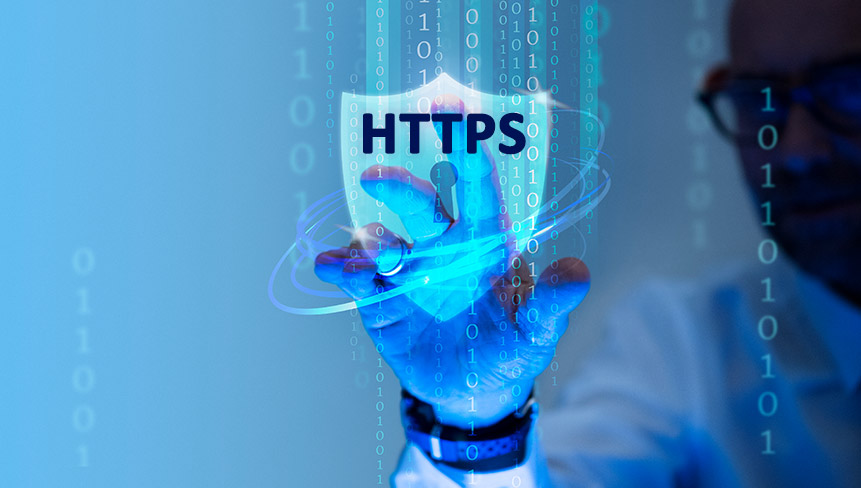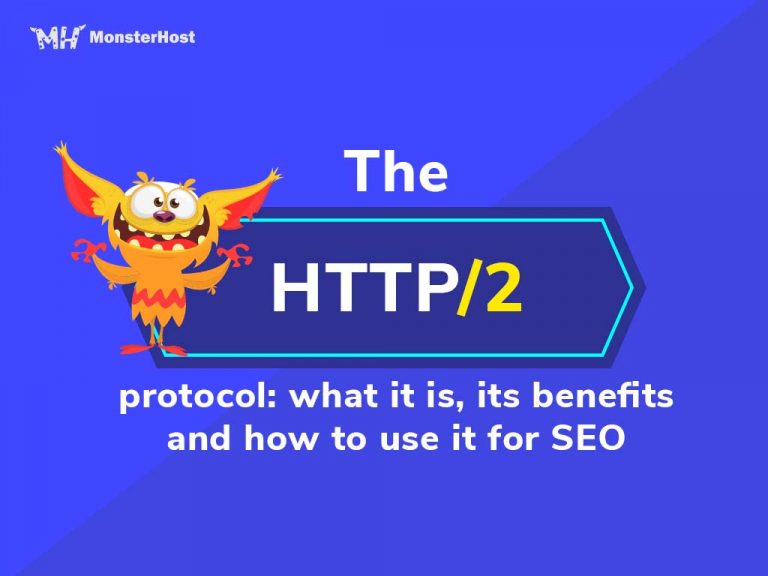During the past few years, the types and volumes of data that are transmitted via the World Wide Web have evolved tremendously. For instance, Content formats have grown in size and complexity, smartphone penetration has risen dramatically, and the worldwide Internet user community is expanding on a regular basis. This ever-changing environment led a group of programmers to develop the syntax of the basic Hyper Text Transfer Protocol (HTTP) with SPDY (pronounced “speedy”).
In the beginning, Web applications are built on protocol HTTP, a basic, restricted, and ultimately uninteresting application layer protocol. What HTTP protocol is, it facilitates the access of network-connected materials available throughout the cyber globe. However, it has grown over the years to provide a quick, secure, and prosperous platform for electronic communication.
HTTP/2 protocol is a project pushed by the Internet Engineering Task Force (IETF) to construct a more resilient Network infrastructure that meets the demands of modern consumers, with the help of some of those SPDY engineers at Google. It was released in May 2015 to revive the protocol HTTP, which had not seen any significant changes since HTTP 1.1. From fundamentals to advanced topics, you’ll learn everything you need to know about HTTP/2.
Let’s get started!
Table of Contents
What is HTTP 2 Protocol?

HTTP (Hypertext Transfer Protocol) is the cornerstone of data transmission on the Internet and is used to send and receive data. After HTTP/1.1 was initially introduced in 1997 by the Internet Engineering Task Force, HTTP/2 is the very first substantial HTTP protocol upgrade since then. However, as web pages grew, HTTP/1.1’s ability to reload them has grown more problematic, as it enables just one ongoing request per TCP connection and one pending appeal. However, web browsers have tried to bypass this by making simultaneous requests via several TCP connections, but this causes congestion and a bad user interface.
A new protocol was needed because of HTTP/1.1’s shortcomings. When the HTTP Working Group of the Internet Engineering Task Force created the HTTP/2 protocol, it solved concerns with HTTP/1.1 and further improved the World Wide Web. Google Chrome, Firefox, Safari, Internet Explorer 11 and Microsoft Edge all support it.
Major Advantages of HTTP 2 Protocol
There was a need to replace HTTP1.x with a new protocol that offered benefits to the classic internet customers. Technology advances are nearly entirely responsible for facilitating the shift from HTTP1.x to HTTP2. According to online companies and internet users, the web is becoming slower as it becomes clogged with ever-increasing amounts of media-rich information that is irrelevant. HTTP/2 improvements are being created to improve client-server data transmission efficiency. Online companies may reach their intended markets efficiently, and internet consumers can quickly get richer digital content.
There are differences in the speed of the Internet across different devices and geographical regions. Heavily populated cellular networks cannot compete with high-speed internet access for a growing number of users who are on the go. Web Protocol Version 2 (HTTP/2) has emerged as a feasible option with the following benefits.
1. Improve Website Performance
The phrase incorporates all of the benefits of HTTP/2. When compared to its predecessors and competitors, HTTP/2 shows better results. A genuine, reasonable, and practical speed gain of HTTP/2 comes from its capacity to transmit and receive more data per client-server communication cycle. Multiplexing technologies, including the multi-story sitting chambers in the Airbus airliner, offer more room for concurrently carrying and sharing more data.
How does web performance increase when the file transfer method removes all obstacles?
An excellent website speed provides many other benefits such as higher customer happiness, improved search engine marketing, greater productivity and resource utilization, increased user base, improved sales statistics, and more. However, HTTP/2 adoption is more realistic than building vacuum chambers for big, multi-story trains, which would be prohibitively expensive.
2. Enhance Internet quality on a Mobile device
The web application is the primary entrance to the digital world for millions of people who access it through their smartphones. Because of the Post-PC Era, more people use smartphones to access Web-based services and conduct boring computing activities on the move, rather than sitting next to a windows pc for extended amounts of time.
As a result of the current web usage patterns, HTTP/2 was developed. It comes with plenty of capabilities such as multiplexing and payload reduction, cellular data networks with limited capacity per user can minimize latency when using internet services. Furthermore, HTTP/2 improves the web experience by providing high reliability and functionality traditionally available on personal computers. Internet companies will benefit immediately from HTTP/2’s benefits for mobile consumers.
3. Internet at a lower cost
Ever since the World Wide Web’s inception, the price of using the Internet has plummeted. Increasing internet availability and speed has always been the goal of internet technology developments. At the same time, telecom service provider monopolies are being accused of being unconstitutional, and cost reductions appear to be stagnant.
The company said higher throughput and data transmission efficiency promised by HTTP/2 would help telecom providers to reduce operating costs while retaining strong internet standards. Low operating expenses will motivate internet services providers to lower prices for the low-end market and incorporate good service tiers into the current pricing scheme.
4. Large Area of Coverage
Having inadequate access to inexpensive Internet, African and Asian markets with high populations remain neglected. Internet companies concentrate their spending on services provided exclusively in metropolitan and developed regions in order to maximize their revenues. Because of HTTP/2’s many perks is expected to be widely adopted, which will automatically reduce network congestion and free up assets and bandwidth for remote, underdeveloped geographical regions.
5. Extensive Media Exposure
Modern online experiences are all about providing media-rich information at lightning-fast browser load times. Internet consumers theoretically want media-rich material and services that are regularly updated. Even when supplied through the cloud as a membership service, the price of the network architecture is not always reasonable for internet startups. HTTP/2 benefits and additional functions such as Header Compression, although not shrinking the actual file size, decrease the effect overhead required to transfer resource-intensive media valuable content between a client and the server via a few bytes.
6. Usage of new tech is improved
Client and server resource usage have grown dramatically due to delivering media-rich content on social media and sophisticated site designs. HTTP/2, a solid and dependable solution, was imminent, even though web developers have worked around good optimization techniques. High bandwidth usage is a significant advantage of HTTP/2, thanks to header compression, server push, stream dependencies, and multiplexing features.
7. Better security
HPACK technique helps HTTP/2 to bypass current security vulnerabilities affecting message application layer protocols. HTTP/2 uses a ‘Security by Obscurity technique to safeguard sensitive data transferred between clients and servers by encoding instructions in binary and compressing HTTP header information. TLS1.2, an enhanced version of Transport Layer Security (TLS1.2), is required for greater data security.
8. Innovation
Innovators and web speed enthusiasts alike will appreciate HTTP/2. HTTP/2, which is based on Google’s SPDY protocol, is the backbone of the Internet as we understand it today. In the coming years, HTTP/2 will displace SPDY and all prior HTTP versions. Riddance from Complex Web Optimization Hacks comes with protocol HTTP browser support as a feasible alternative for web developers to build high-quality websites and online services.
What does HTTP/2 imply in terms of SEO?

HTTP/2 is a comparatively recent data transport technology that will significantly boost the web and benefit website SEO. The old HTTP protocol version takes a long time to deliver files over a single line because the line must be opened and closed after each file is sent. Due to the fact that the line may be kept open and a large amount of data can be transferred at once, HTTP/2 delivers a considerable speed gain over HTTP.
The SEO impact will be noticed implicitly, as it is with so many website upgrades every day. Google does not consider whether a site is HTTP/2-ready in its algorithms, but it does promote sites that deliver a smooth user experience. As a result, switching to HTTP/2 will positively impact a site’s search engine optimization. HTTP/2 will definitely enhance mobile performance, which has been the focus of recent speed-up initiatives.
While new coding languages like AMP HTML have limited uses, a shift to HTTP/2 offers advantages throughout all devices and digital media. However, the benefits of HTTP/2 are far-reaching and long-lasting, so we should consider it as a platform for quicker and more reliable SEO.
What should we do to upgrade to HTTP/2?
You must first have an HTTPS version of your website. However, once your website is safe, switching to HTTP/2 is relatively painless. HTTP/2 is known as a “faster and safer” protocol for the current Internet. Thus, its relevance is reasonable. The application on your server may need to be updated if your site is already safeguarded. In order to check, you can use SPDYCheck. On Github, you can get the list of all HTTP/2 versions that are quite helpful.
HTTP/2 migration is relatively easy
Take a look at your analytics to see where your customers are coming through. HTTP/2-friendly browsers like Google Chrome, Firefox, and Microsoft Edge are highly likely to source these requests. However, sites are responsible for making the necessary changes, as most browsers are already compliant with this new protocol. In addition, if a site is using HTTP/2 and connects to a resource that is still using HTTP 1.1, they will interact using the prior protocol.
Updates to your site’s protocol have no significant disadvantages, but they offer a more excellent user experience. Soon, when Google begins working with it directly, this will be of enormous advantage. You may use FandangoSEO’s crawler to monitor your webpages’ speed and find HTTP/2’s benefits.
Pros of HTTP/2 Protocol for Search Engine Optimization
As search engines get more complicated, conventional black hat SEO techniques fail to affect search engine ranks. Industry standards for search engine optimization go further than front-end marketing strategies to include the whole client-server communication lifecycle. As digital communication tools have evolved, SEOs have lost their prominence in internet marketing teams. Web developers and marketers are being forced to rethink their strategies because of HTTP/2’s widespread adoption.
Today online business relies heavily on implementing and optimizing the framework for HTTP/2 and its anticipated performance improvements. HTTP/2 and the accompanying SEO boost are essential for online companies that lack an excellent organic customer base. They compete with ever-growing internet marketing enterprises based on performance and excellent online service, rated even better with HTTP/2 on the server-side.
Bottom Line
We all know that quicker websites enhance Google search results, but they also provide a great user experience. Faster web pages keep your users engaged for more extended periods and encourage additional sharing and connecting. HTTP/2 is a huge step forward that can assist you to enhance your site’s quality and performance. On the other hand, the HTTP/2 protocol is not a miracle.
Optimizations such as losslessly optimizing your website’s pictures can significantly impact your site’s speed and will continue to be required.
In summary, although adding HTTP/2 support to your website is essential, you should also make additional improvements and apply best practices to provide the best possible user interface.
The Takeaway
In summary, we have created the above tutorial to help you understand what HTTP2 is, its benefits, and how to use it for SEO in a more specific manner. Furthermore, ask yourself about your goals for moving forward now that you have all of the above essential elements in mind to choose the Fast, Secure Bedrock for the Future of SEO. Furthermore, if you require SSL certificates for your website to safeguard user data, authenticate website ownership, and prevent attackers from constructing a bogus version of the site, please visit our website to obtain the finest EV or DV SSL certificate plan for your website.






